Index
Thermals
Hot summer days are not quite graphics-friendly and while our advice in the case of GTX 480 would be to put your computer in a fridge or move to the North Pole, the GTX 460 cards in SLI mode had no problems with overheating. As you probably know, GF104 (40nm ) is based on Fermi architecture but it packs less transistors compared to the GF100, which means less heat.
Nvidia’s reference cooling does a great job this time around, and there’s really no need for non-reference cooling – not even in the case of assembling 2-way SLI.
Test 1
We intentionally put EVGA’s GTX 460 768MB cards in the worst possible position – with virtually no free space between them. This would mean that airflow will be hindered in between the cards, and that the upper card will probably run hotter.
Indeed, the upper card ran hotter because its fan draws already hot air from the card below. In idle mode, we recorded a 7°C difference between the GPUs.
We tested GTX 460 SLI at reference clocks (675MHz GPU/3600MHz memory) as well as on Superclocked clocks (763MHz GPU/ 3800MHz memory). Note that regardless of 3D clocks, idle operation results in the card downclocking to 50MHz GPU and 67MHz memory.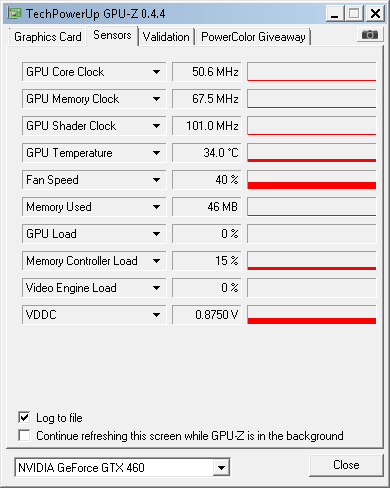
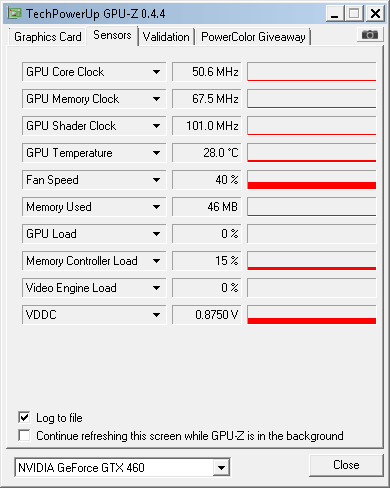
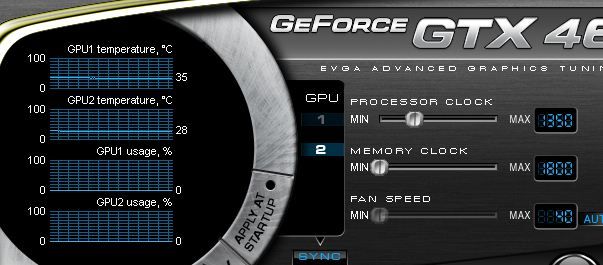
FurMark testing resulted in 16°C difference between the GPUs. Maximum temperatures on the upper card at Superclocked clocks (763MHz/3800MHz) were at 84°C, whereas the bottom card hit maximum 68°C. At reference clocks, the temperatures were 2°C lower on each GPU, as you can see from the picture below.
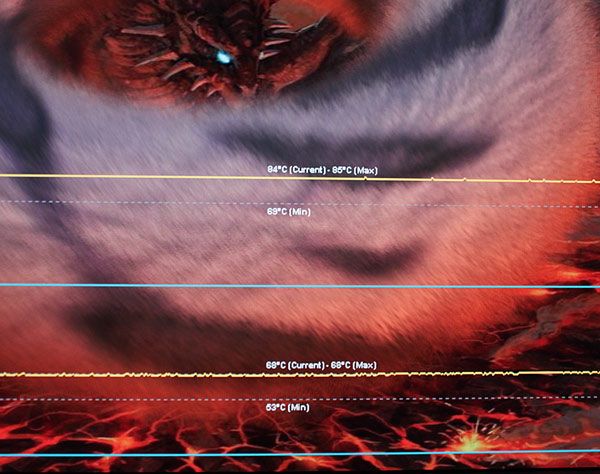
Test 2
We cut the cards some slack in our second test and gave them some breathing room by placing them 2 slots apart.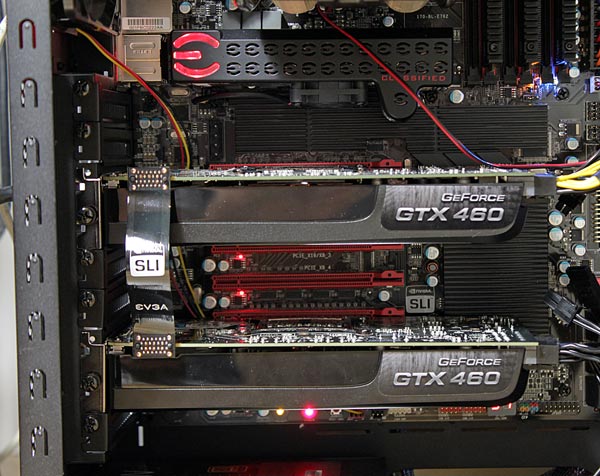
Compared to Test 1 temperatures, our idle-operation measurements were 3°C lower. FurMark testing was also cooler, and we recorded 10°C lower temperatures. This means that maximum temperatures were not at 84°C but 74°C.
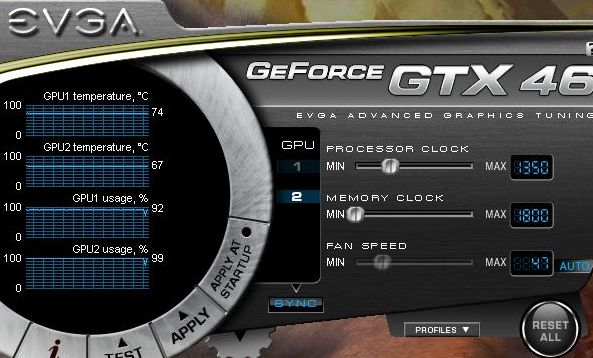
As far as noise in 3D goes, 2-way SLI with GTX 460 768MB cards is much quieter than a single GTX 480.
Unlike the GTX 460 cards which weren’t noticeably loud, the GTX 480’s fan was so loud in FurMark that we couldn’t wait for it to end. Furthermore, not even all this noise and fan-work managed to push temperatures below 93°C.
Consumption
GTX 460 768MB card has the same TDP – 150W. Our entire rig without the monitor drew up to 299W with one EVGA GTX 460 768MB Superclocked. Two GTX 460 768MB Superclocked cards in SLI mode pushed the consumption up to 492W.
Two GTX 465 768MB cards in SLI mode resulted in consumption of up to 465W whereas the GTX 480 managed to top this – 494W was the final figure.
Idle operation with the GTX 460 SLI resulted in our rig drawing about 160W, whereas the GTX 480 consumed about 168W.



